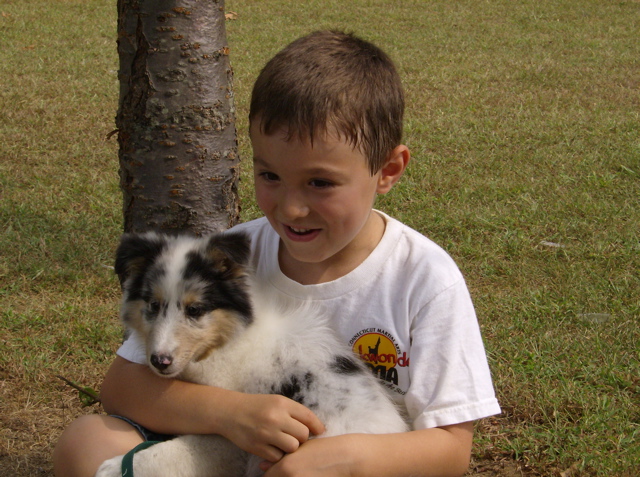History of the Shetland Sheepdog
The Shetland Islands, a group of approximately 100 small islands, lie about 50 miles off the northern coast of Scotland. The largest island, Mainland, is about 60 miles long and 3 miles from the seashore. Due to the ruggedness of the climate and sparseness of vegetation, Shetland Ponies, sheep and cattle grow much smaller when bred on the islands Likewise, the “toonie” or town or “peerie” (fairy) dogs were reduced replicas of their ancestor, the Collie.
BRIEF HISTORY: It is thought that the dogs were originally brought to the islands on fishing fleets of the Norse and Scots Evident in the early shelties was the influence of the Greenland Yakki dogs, the King Charles Spaniel and the Welsh and Scotch working collie. Most of the original shelties were somewhat collie-like in appearance The sheepherders (crofters) and the dogs were working partners, with the dogs protecting his property and caring for the sheep. The dogs were selected for smaller size, working ability, stamina, courage, intelligence and sensitivity to their owners, traits which are fixed in the breed to this day.
In the 1800’s, many of the small sheep farms were taken over by large commercial operations. Shelties then became more of lap dogs with Pomeranians and other small breeds introduced into the breed. In 1908, in an effort to safeguard the breed, the Sheltland Collie Club was founded. Standards for height and appearance were introduced and the name Shetland Sheepdog was founded.
The first shelties were imported to the US around 1910. Most of these were the descendants of small collie lines bred in England. The American Shetland Sheepdog Club was founded in 1929 and the first breed Standard was written and stood until 1952. In 1959, the American Standard was revised to specify a 13 to 16 inch size limit for either sex and all collie crosses were barred .






